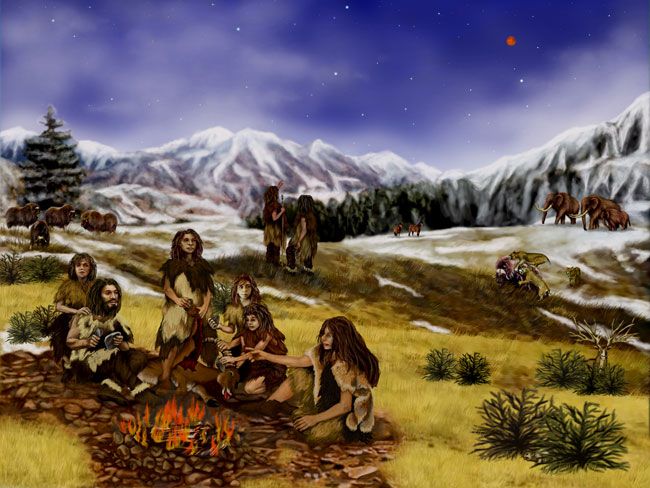'Dumb' Neanderthals Likely Had a Smart Diet

Instead of Neanderthals being dim-witted hunters who only dined on big game, new findings suggest they had more balanced diets, with broad menus that may have included birds, fish and plants.
Neanderthals are currently our closest known extinct relatives, near enough to modern humans to interbreed, with Neanderthal DNA making up 1 percent to 4 percent of modern Eurasian genomes. A host of recent findings suggest they were not only close genetically, but may have shared many other traits with us, such as creating art.
Still, the term "Neanderthal" has long been synonymous with "stupid."
"Since they went extinct, conventional wisdom says they were dumber than us," said researcher Bruce Hardy, a paleoanthropologist at Kenyon College in Gambier, Ohio. [Gnawed Bones Reveal Cannibal Cavemen]
For instance, ample fossil evidence suggests Neanderthals hunted big game, deriving the vast majority of their diet from deer, mammoths and other large herbivores. Still, while pursuing such prey undoubtedly must have taken smarts, this fact also led some researchers to suggest they may have had little interest or even capability to dine on other items. Although hints that Neanderthals supplemented their diet with birds, fish, shellfish and plants have popped up at certain sites, these are typically dismissed as unusual exceptions, Hardy said.
"It's been said that Neanderthals weren't capable of hunting birds — they moved too fast," Hardy noted.
Now researchers find evidence that Neanderthals may indeed have dined on a broad menu of plant and animal foods at a cave in the Rhone Valley in France.
Sign up for the Live Science daily newsletter now
Get the world’s most fascinating discoveries delivered straight to your inbox.
"We can now move away from this view of Neanderthals as dim-witted big game hunters," Hardy told LiveScience.
The area was excavated by Marie-Hélène Moncel at the French Institute of Human Paleontology in Paris, and her colleagues. Distinctly Neanderthal flint toolsfound at the site called Payre suggest it was used repeatedly by our extinct relatives between 125,000 and 250,000 years ago.
In addition to bones of deer, horses, cattle, rhinos and elephants, in Hardy's analysis of 182 stone artifacts found there, he also found microscopic residues of fish scales, bird feathers and starchy plants. It remains uncertain what exactly those animals and plants might have been, although edible roots in the area included wild carrots and wild parsnips.
"It's not surprising that they might have been able to exploit these resources, but it's nice to have evidence," Hardy said. "We've been reliant on an incomplete fossil record dominated by large animals, because those survive better over time. When we look more carefully and widely, we find that's not the entire picture."
Hardy and Moncel detailed their findings online Aug. 24 in the journal PLoS ONE.
Follow LiveScience for the latest in science news and discoveries on Twitter @livescience and on Facebook.

Most Popular



